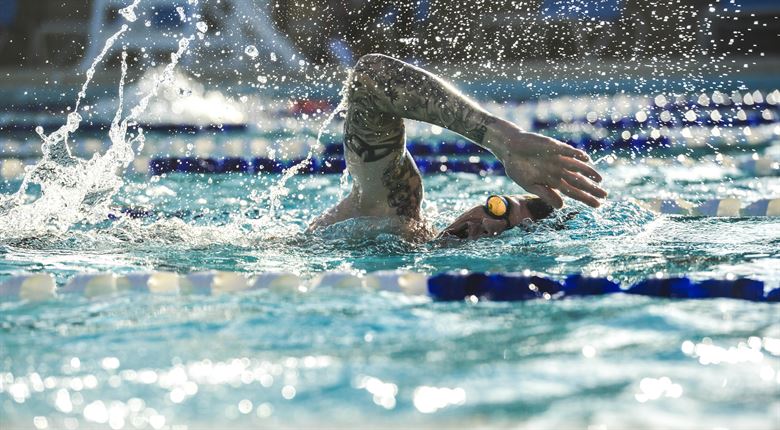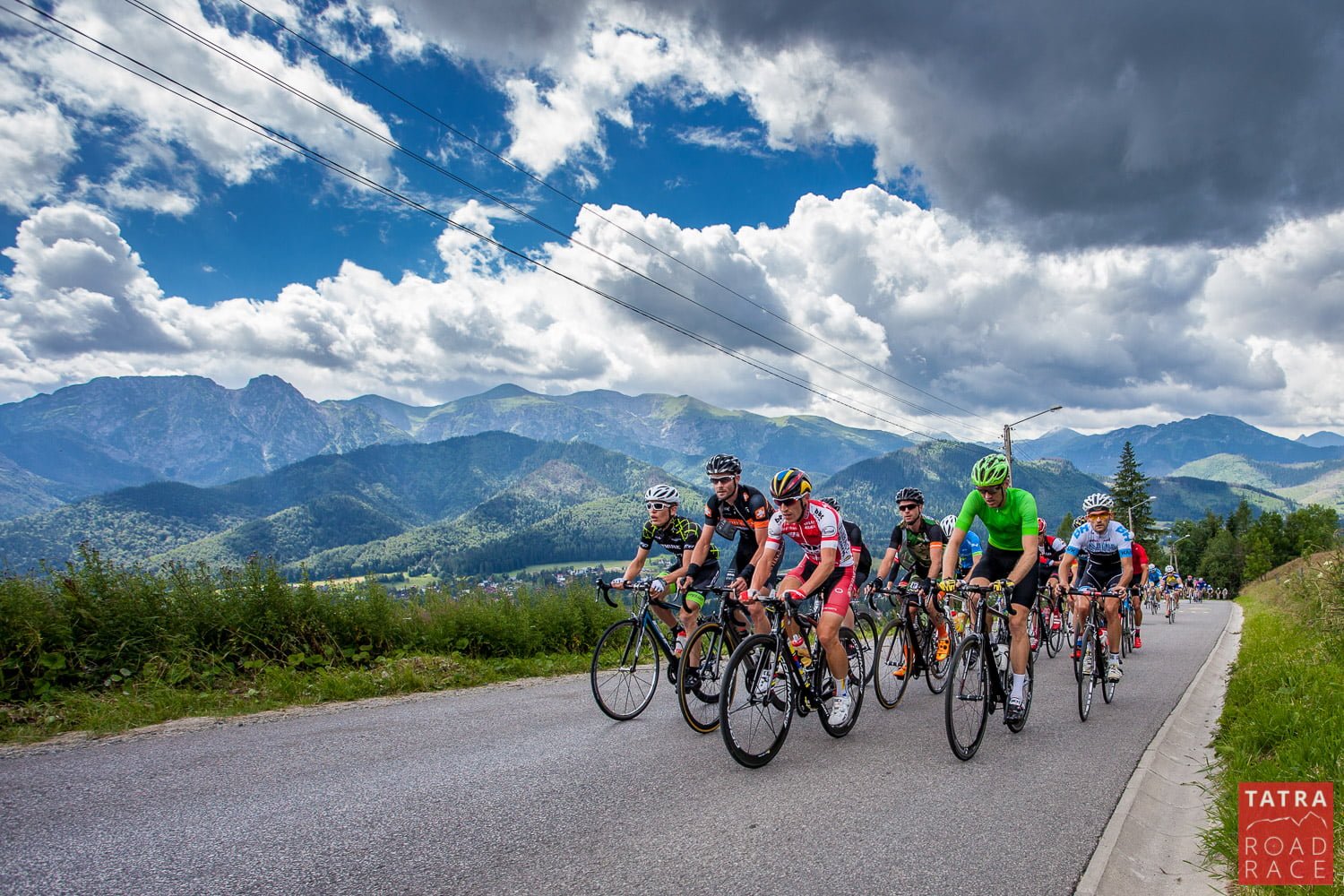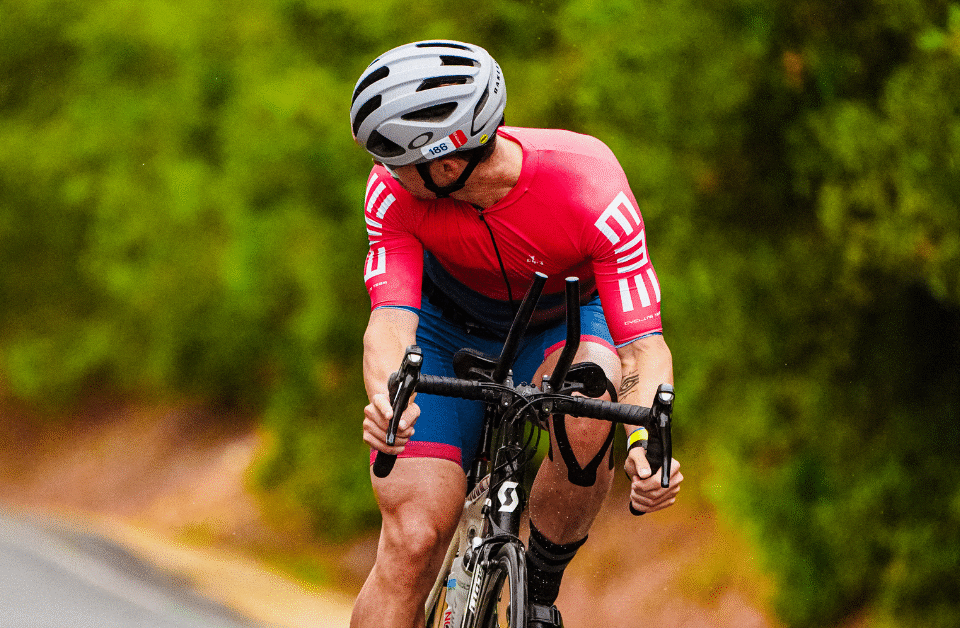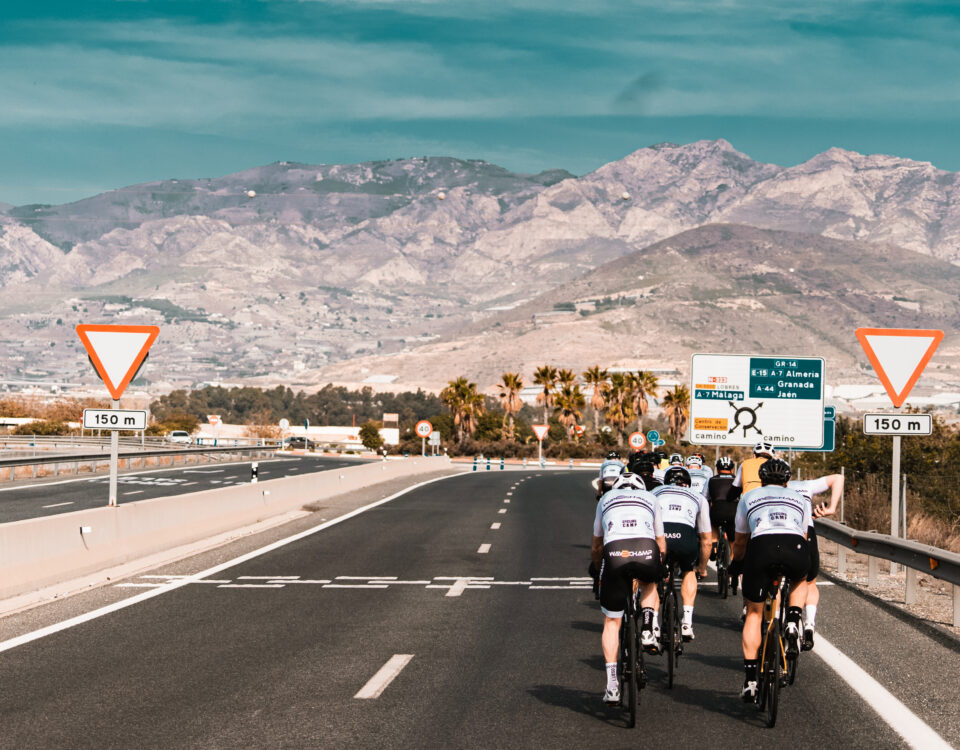
Off-Season Swim Block
25 January 2018
In search of Life/Training balance
15 March 2019
By Mateusz Gawelczyk, sports nutritionist, www.cezis.pl
What to eat and drink during exercise? This question seems to be looming large in many amateur athletes’ minds, and even professionals often commit mistakes in this matter. According to the current state of knowledge, the amount of carbohydrates that we should deliver to the body during physical exercise is 30-90 g per hour.
The most common mistake I encounter is the lack or insufficient amount of food and drink, which often limits the athlete’s abilities, taking away, on one hand, the pleasure of riding (when the effort becomes too heavy), and on the other hand, hindering its development (as a result of worse implementation of training units). Below I have prepared for you a list of 10 products that should become an inseparable attribute of a cyclist, during workouts and races. You can use all of these products, and their number will be individually adapted to the length and intensity of the workout and your goals.
Mineral water
It is the basic hydration element during most cycling workouts. According to the current state of knowledge, if the effort lasts up to 60 minutes to maintain adequate hydration, it is enough to use mineral water, and the used muscle glycogen should be supplemented in the meals following the training. Remember to use mineral water, not spring water, which naturally supplements the partial mineral losses that arise during exercise.

Isotonic drink
The most commonly consumed drink by athletes, which, in addition to supplementing hydration, is also a source of sugar and minerals, therefore supplementing the losses generated during exercise. This drink should have the osmolality similar to the osmolality of body fluids and contain 60-80 g of carbohydrates per liter of liquid. Remember when preparing a drink from a powder to strictly follow the recipe given by the manufacturer, or dissolve a certain amount of powder in a little more water. If, after preparing the drink you are still not convinced, change the manufacturer, instead of maneuvering the concentration of the drink itself, as this may increase the risk of gastrointestinal problems. It is worth noting that due to the number of carbohydrates, this drink should be consumed in an amount not exceeding 1-1.5 L for each hour of exercise. Currently, SIS or NamedSport products can be distinguished among the companies that are most often used by cyclists.
Hypotonic drink
A drink similar to the isotonic drink discussed above, however, characterized by lower osmolality. This means that it has a smaller amount of carbohydrates and minerals. This type of drink also hydrates our body very well, but to a lesser extent contributes to the replenishment of sugar. The hypotonic drink will be great when riding in hot or humid weather conditions when the priority is hydrating the body, and through a large intake of hypotonic beverages or eating other products that are an excellent source of carbohydrates, we will provide the right amount of sugar. The easiest way to prepare a hypotonic drink is to dissolve the recommended amount of powder that you use to make an isotonic beverage, only in a larger amount of water, e.g., in 1000 ml instead of in 500 ml.
Energy gels
A well known concentrated form of carbohydrates packed conveniently in small quantities that can easily fit in a cycling pocket. Usually, one portion of a gel contains about 18-25 g of easily digestible carbohydrates, so for an hour of exercise, we can consume a maximum of 3-4 gels. We have a lot of gels on the market, and the most significant differences we can find concern the opening method of the package, taste, consistency, and type of carbohydrates used. If we want to supply carbohydrates in the amount greater than 60 g per hour, it is worth using gels containing both glucose or its polymers and fructose in a ratio of 2:1, due to the different intestinal transporters involved. From a practical point of view, it’s good to use gels that contain one portion per gel, open easily, that are isotonic (no sipping needed) and mild in taste. Brands such as SIS, NamedSport, High5 offer a wide range of isotonic gels, and Squeezy offers gels with a somewhat unusual taste of beer!

Energy bars
Another concentrated form of carbohydrates, however, in contrast to energy gels it is a solid food so it can help inhibit hunger during exercise. The amount of carbs per serving is usually 20-30 g, but apart from carbohydrates, we can find other ingredients such as small amounts of protein, fat, and fiber. In the case of people with sensitive intestines, they should be approached with caution as they may cause gastrointestinal problems. It is worth choosing the bars that include mainly puffed rice, dried fruit, with low amounts of nuts or seeds and raw cereal flakes. Here, I also recommend companies such as SIS or NamedSport.
Sandwiches
The first proposals of conventional food for training or competition, which has been used for a long time. It is true that it is rarely sandwiches, and more often sliced baguettes but the scheme remains the same. Most often it is a piece of bread smeared with a small amount of butter or cream cheese, with ham or cheese. It is worth remembering that the sweet taste after a few hours spent in the saddle is unacceptable to many people, hence many athletes seak for more salty options. This type of meal works very well, especially when riding at low intensity, where the digestive system will work quite well.
Rice cakes
Perhaps the most popular snack among professional cyclists. Easily digestible, quick to prepare and relatively easy to transport and customizable in taste – rice cakes are perfect for a long ride on a bike. If you are looking for interesting recipes, I encourage you to visit the website of Team SKY’s cook who specializes in these snacks.
Jelly beans
As a highly processed food product, it is still controversial, but after watching the world champion, Peter Sagan, eat jelly beans of a well-known brand after a stage, the world of cycling sees them with more kind eyes. The pure form of sugar, in a simple and tasty form, is often used by cyclists during or immediately after workouts. On the market you can find jellies specially designed for athletes, containing caffeine to stimulate the body to work harder.

Dried fruits
A good solution for all people who want to eat as naturally as possible. The high carbohydrate content at low volume creates a combination that perfectly matches the requirements of cyclists. From a practical point of view, fruits of a larger size, such as figs, apricots or dates (without seeds) will work better. A handful of fruit will correspond to approximately 1 pc of gel or energy bar.
Fresh fruit
Here, the choice is narrower in comparison to dried fruit for practical reasons. It’s hard to imagine anyone eating grapes, grapefruit or an apple while riding a bike. Thus, usually fresh fruit is limited to a banana, one piece of which corresponds to approximately 1 pc of gel or energy bar.
Remember that performing a workout lasting more than 60 minutes, even if it’ an easy workout, without food or drink is a mistake, and you should practice eating during workouts the same way as you train your cardiorespiratory system. If you don’t practice eating and drinking during workouts, do not expect that your body will adequately digest the delivered food in racing conditions.

